Billiard Cushions
DAYS OF OLD No. 4 -(October 1982)
Billiard / Snooker Table Cushions
We have in the previous article on the development of the
billiard table referred to the introduction of the slate bed. The
next important improvement to produce the table as we know it today
was to the cushions.
The first type of cushion as previously described was just
padding around the wooden rim of the table, it was probably the
obvious thing to do to reduce the noisy impact of the balls. This
type of protective padding was improved and the cushion known as
the "List Cushion" was used in conjunction with the wooden bed
tables.
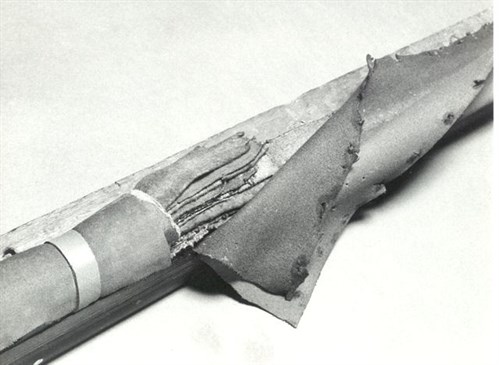
It was made up of layers of cloth either list or felt which were
then covered in billiard cloth (see illustration), but it was not
until 9 or 10 years after the introduction of the slate bed and
followed the introduction of rubber to europe from South America
that a rubber cushion was developed. Again it was John Thurston,
with the opinion of Edwin Kentfield to support his experiments, who
introduced rubber cushions in 1835.
The first rubber used was pure natural rubber, as vulcanising
had not yet been invented. Sheets of rubber about 1/8th inch thick
were cut into strips and built up into layers (see illustration) in
the same manner as previously arranged by using layers of felt or
list to form the cushion nosing.
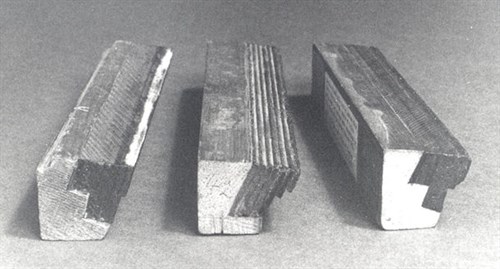
On the centre section you can see
the strips that have been bonded to-gether
John Roberts, Snr. remarked about the new rubber cushion
"Thurston's Cushions are Simply Perfect". Generally the rubber
provided much improved playing conditions except during cold
British winters - before central heating!! Natural rubber becomes
very hard - almost like wood - at moderately low temperatures i.e.
Around 0°C the new style rubber cushioning lost all their
resilience so many players, including some of the professionals,
proclaimed that stuffed list cushions were still the best. To
overcome this problem hot water pans were made in zinc measuring
about 6ft.. long 1 1/2 inches. square (see illustration) and shaped
to fit against the nose of the rubber cushion. A set of 6 hot water
pans were required and during cold weather they would be filled
with boiling water and placed in position on the table against the
cushion rubber so that the table could be used later.
(There were even hot water pans for the pocket
openings!)
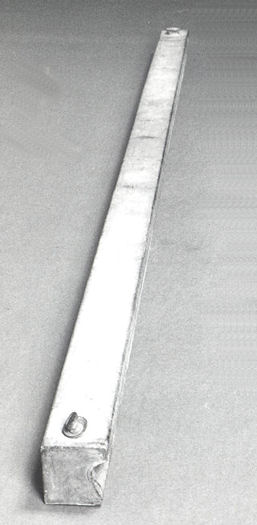
This difficulty was eliminated
when, using sulphur, the process of vulcanising rubber was
invented, as vulcanised rubber retains most (but not all) of its
resilience at lowest temperatures. Once again John Thurston was the
first billiard table maker to use vulcanised rubber for billiard
table cushions, this being in 1845 when he had obtained Letters
Patent for this improvement. One of the first tables to be so
fitted was for Queen Victoria's Billiard Table at Buckingham Palace
and the new so called "Frost Proof" cushions were also fitted to a
rather special billiard table which still stands in Queen
Victoria's summer residence, Osborne House, on the Isle-of-Wight
The supporting underframe of this table is made entirely of slate,
the work of Mr. Eugene Magnus, the proprietor of a slate works at
Pimlico, London. He also worked with John Thurston making this
table and other similar special slate framed tables which are still
standing in Penryhn Castle, Bangor, North Wales and in the Duke of
Wellington's seat at Stratfield Saye, Nr. Reading.(See article Days
of Old No. 7)
It should be mentioned to our readers that although vulcanised
natural rubber is described as "Frost Proof" its resilience is
still slightly reduced by low temperatures, therefore to ensure
good playing conditions the temperature in all Billiard Rooms
should be maintained at a reasonable level say 18°C (65°F).
In 1886 a patent was filed in December of that year (see
illustration) by a Mr. W. Buttery for fitting a steel plate into
the cushion body. Mr. Buttery worked for Burroughes & Watts,
the comapny who promoted this type of Billiard Cushion.
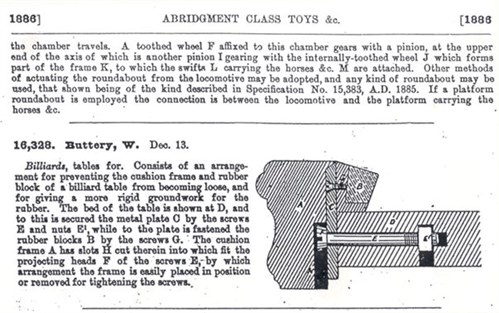
This was the first "Steel Block" cushion, the idea was to give a
more rigid ground work for the rubber. It is true to say that for
cushions on old tables with a thin cushion rails of light
construction the steel block does improve the playing
characteristic of the cushions Other makers tried other methods one
of which was to include slate blocks (Thurston Adamant Cushions) in
the cushion body however there is really nothing better than a good
heavy wooden rail of hardwood such as mahogany or oak; etc. or the
modern resin bonded laminate cushions rails.
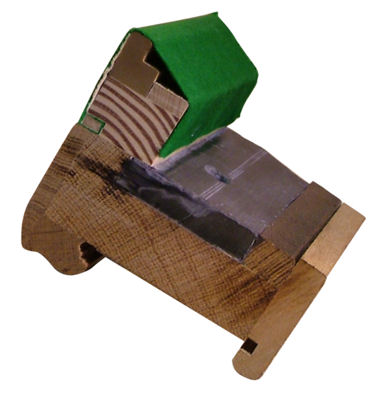
Coss section of a Thurston
Adamant Cushion showing the inlaid slate section
Otherwise costs are unnecessarily
increased on new tables and on all future service visits during the
long life of the billiard tables. Billiard cushioning made by
building up layers of rubber to the desired shape were still
generally accepted as producing the best performance up to the late
1930's - although during this decade moulded cushion rubbers were
introduced and gradually became accepted. During World War II - by
Government Order - rubber for billiard table cushioning was not
permitted as rubber was such an important strategic material for
the War effort and so by the end of the war in 1945 there was a
tremendous "backlog" of cushion renovation work - for a year or two
only synthetic rubber could be used but this was quite
unsatisfactory. When Vulcanised Natural Rubber cushions again
became available it was all of "the moulded" type, and has remained
so ever since.
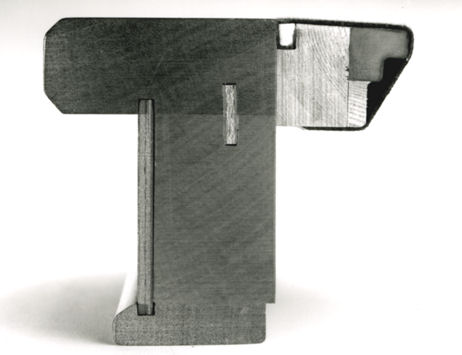
Cross section of a
'modern' cushion showing the moulded rubber shape
Modern billiard (snooker) cushions are frequently described as
being 'Low', 'Fast', 'Frost Proof" followed by the particular Brand
Name of the manufacturer. (This was still just
about true when Norman wrote this article but these terms are no
longer used) - "Frost Proof we have already
explained. "Fast" in in a way self explanatory players do demand a
good response from cushioning, the greater the "running speed" or
"Distance travelled" by the ball for a given strokes the happier
they are. but tables can be too fast making it extremely difficult
to secure the desired position for the next stroke.
'Low' this description will most easily be understood by
reference to the illustrations. The original style or shape of
cushions nosing sometimes referred to as "Bull Nose" was so high
that when the cue ball was close to or touching the cushion the
player had to raise the butt of the cue to a near vertical position
in order to strike the halls as time want on, although the height
of the point of contact between the ball and the cushion remained
almost unchanged the upper surface of the cushioning was made
progressively flatter and lower so that the cue did not have to be
raised to any extent.(see illustrations)
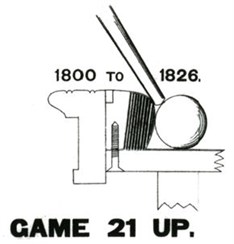
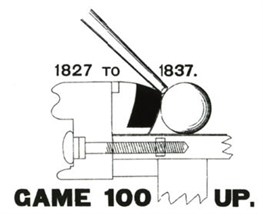
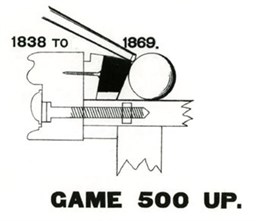
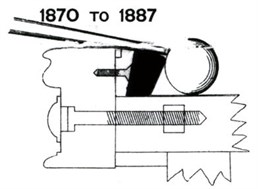
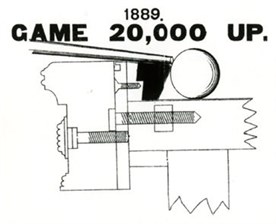
The last image shows a very
similar profile to a current billiard (snooker) cushion but
this illustration still shows bonded strip rubber
****************
© Norman Clare 1990. © E.A.
Clare & Son Ltd. 2018/19/20.
Reproduction of this article allowed only with the permission
from
E.A. Clare & Son
Ltd.
Please do not hesitate to ask should need any advice on snooker,
billiards or pool or wish to make a purchase. Thurston has the most
comprehensive range of tables and accessories available.
Thurston Shop is now online
only - thurston.co.uk - the physical shop is closed to walkin
customers.
Visit our e-shop - www.thurston.co.uk
email - thurston@eaclare.co.uk
Phone - 0151 482 2700

